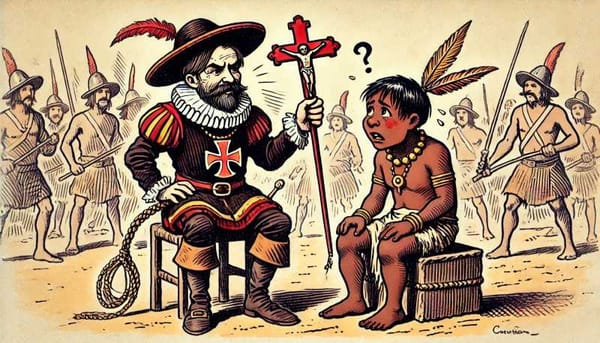The Meridas of the world: from Extremadura to Mexico, Venezuela and the Philippines
The four main "Meridas of the world" are Mexico, Venezuela, the Philippines, and Extremadura, the mother of all Meridas.

The times of conquests left an infinite number of Spanish place names scattered throughout the world, both in America and Asia, and Merida is a good example of this. The four main "Meridas of the world" are Mexico, Venezuela, the Philippines, and Extremadura, the mother of all Meridas.
Extremadura was the land of conquerors. And of course, when the newly conquered territories needed a name, everyone remembered the motherland when they were baptized. Hernán Cortés, Francisco Pizarro, Vasco Nuñez de Balboa, Francisco de Orellana, Pedro de Valdivia, Hernando de Soto, all explorers and conquerors in the Americas, and all from Extremadura.
There are many names repeated throughout the world, and also others related to various Spanish cities such as Granada, León, Córdoba, Burgos, Seville, or Santiago, there is one that we can find in three different continents: Mérida. And so the four Meridas of the world are distributed: Extremadura, Mexico, Venezuela, and the Philippines.
Extremadura's Merida, where it all began
Mérida Extremadura is the mother of all Méridas in the world. In fact, on Cava Street, next to the Alcazaba, we find the Parque de las Méridas del Mundo, where a monument recalls in its inscription "To the sister cities of the Méridas of the World", mentioning the Mexican, the Venezuelan, and the Philippine.
Mérida, in Badajoz, is a monumental city like few and with a Roman past, when it was Augusta Emerita and capital of the province of Lusitania, which is still very much alive today thanks to its theater, its amphitheater, its bridge, its circus, its temples and the remains of a few houses that have come to light. The National Museum of Roman Art is also undoubtedly one of the main points of interest that you should not miss when passing through the capital of Extremadura.
Every summer, and for 65 years now, the International Classical Theatre Festival of Mérida is held there, in which for two months the Roman theatre of the city comes back to life and recalls its era of splendor by hosting important plays and shows.
The Mexican Merida, in the middle of the Yucatan
When the Spaniards took Yucatan, in Mexico, they founded a new city where the abandoned Mayan city of T'Hó was located, and as some conquerors were Emeritans, and the stones of the half-reduced Mayan buildings reminded them of the Roman ruins of Merida, it was decided to give it the same name as the city of Extremadura.
That was in 1542, and the founders were Francisco de Montejo el Mozo and a hundred other Spanish families. Those same stones were used to build the new city and with it the Cathedral of San Ildefonso, which is said to be the oldest in continental America, although this always sows controversy and discussions.
Mérida is a city to visit calmly, where you can easily enjoy its marked colonial center, corresponding to the seventeenth and eighteenth centuries. You can miss neither its Cathedral nor its Plaza Grande, as well as the Casa de los Montejos, the Municipal Palace, the Paseo de Montejo, or the Monumento a la Patria, among many other points of interest.
One of the most magical and special moments of this Mérida is lived at the end of October, during the celebration of the Hanal Pixán, the Day of the Dead of Yucatán. During these days the families following the Mayan tradition prepare altars to receive the visit of the souls of their deceased loved ones, and a great parade takes place the evening of the 31st from the cemetery to the center of the city.
A tradition of high tourist attraction, in which up to 60,000 people can get together, and in which nobody wants to miss the opportunity to paint their faces like a catrina or a catrín.
Venezuelan Merida, a university city
The origin of Venezuelan Merida dates back to 1558 when it was founded by Juan Rodríguez Suárez, a Spanish conqueror from Extremadura who toured the territories of present-day Venezuela and Colombia. He changed his name several times until finally becoming Santiago de los Caballeros de Mérida. It is, by the way, the capital of the State of Merida.
The city, surrounded by imposing green mountains, retains a colonial old town that is well worth a visit. There are buildings such as the Archbishop's Palace, the Government Palace, the Cathedral, and the University, one of the most traditional in the country, which makes the Venezuelan Merida a true student city. Its squares and gardens help, where there is always a good green place to chat.
Mérida is also proud to host the Mukumbari, which boasts the highest cable car in the world and the second-longest. It is born in the city of Merida, at an altitude of 1,640 meters, and climbs to the top of Espejo peak, at 4,765 meters, in the Venezuelan Andes. It is made up of four different sections and the total journey takes about 50 minutes. The views are breathtaking.
The Philippine Merida, the only Asian Merida
The Asian representative of Merida can be found in the Philippines, where more than three centuries of Spanish presence left a multitude of Hispanic place names. It is the youngest of all, was founded in 1857 by Domingo Fernandez Ember, governor of the province of Leyte, in memory of the Spanish Merida. In the middle of World War II, the city was bombarded by the Japanese and you will find it east of the island of Cebu and just north of the island of Bohol, although it is not exactly a tourist destination.




